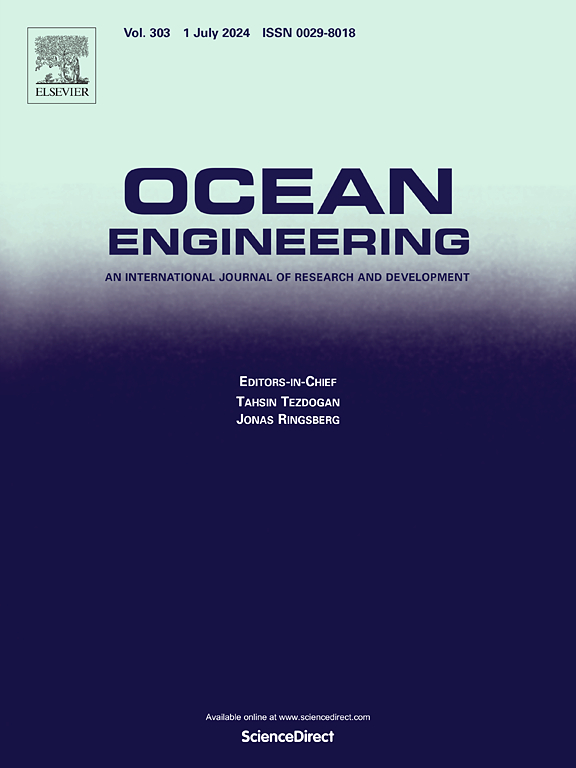基于MTSP-NSGA-III的水下滑翔机群多点探测路径规划
IF 5.5
2区 工程技术
Q1 ENGINEERING, CIVIL
引用次数: 0
摘要
水下滑翔机群通过个体间的协作,能够高效、可靠地执行水面多点探测任务。为了进一步提高滑翔机群在复杂洋流条件下执行多点探测任务的效率,需要对目标探测点的探测顺序进行优化,这显然是一个路径规划问题。针对这一问题,本文建立了基于运动学关系和受力分析的滑翔机性能评价模型,实现了能量消耗、运动精度和航行时间的定量分析。在此基础上,结合深度平均流速预测法和运动综合原理,提出了滑翔机的点到点路径规划方法。在此基础上,将点对点路径规划方法与多旅行商问题(MTSP)的求解方法相结合,提出了滑翔机群多点探索路径规划的数学模型,以提高滑翔机群的运动精度,降低滑翔机群的能量消耗和航行时间。基于非支配排序遗传算法III (NSGA-III),提出了该数学模型的求解方法。最后,通过几个考虑不同海流的数值算例验证了所提方法的有效性,总结了一些结论。研究工作旨在为水下滑翔机群的实际应用提供理论指导。本文章由计算机程序翻译,如有差异,请以英文原文为准。
MTSP-NSGA-III based path planning for underwater glider swarm executing multi-point exploration missions
The underwater glider swarm can efficiently and reliably execute water surface multi-point exploration missions through collaboration among individual gliders. To further improve the efficiency of a glider swarm in executing multi-point exploration missions under complex ocean currents, it is necessary to optimize the detection sequence of target exploration points, which is clearly a path planning problem. To address this issue, this paper establishes performance evaluation models for glider based on kinematic relationship and force analysis, enabling the quantitative analysis of energy consumption, motion accuracy and voyage time. On this basis, a point-to-point path planning method for glider is developed by combining the depth-averaged current velocity prediction method and the principle of motion synthesis. Furthermore, combining the point-to-point path planning method with the solution approach for the multiple traveling salesman problem (MTSP), a mathematical model for multi-point exploration path planning of glider swarm is proposed, aiming to improve the motion accuracy and reduce energy consumption and voyage time of the gliders. Based on the non-dominated sorting genetic algorithm III (NSGA-III), the solution method of the mathematical model is proposed. Finally, the effectiveness of the proposed method is validated by several numerical cases considering different ocean currents, summarizing some conclusions. The research work aims to provide theoretical guidance for the practical application of the underwater glider swarm.
求助全文
通过发布文献求助,成功后即可免费获取论文全文。
去求助
来源期刊

Ocean Engineering
工程技术-工程:大洋
CiteScore
7.30
自引率
34.00%
发文量
2379
审稿时长
8.1 months
期刊介绍:
Ocean Engineering provides a medium for the publication of original research and development work in the field of ocean engineering. Ocean Engineering seeks papers in the following topics.
 求助内容:
求助内容: 应助结果提醒方式:
应助结果提醒方式:


